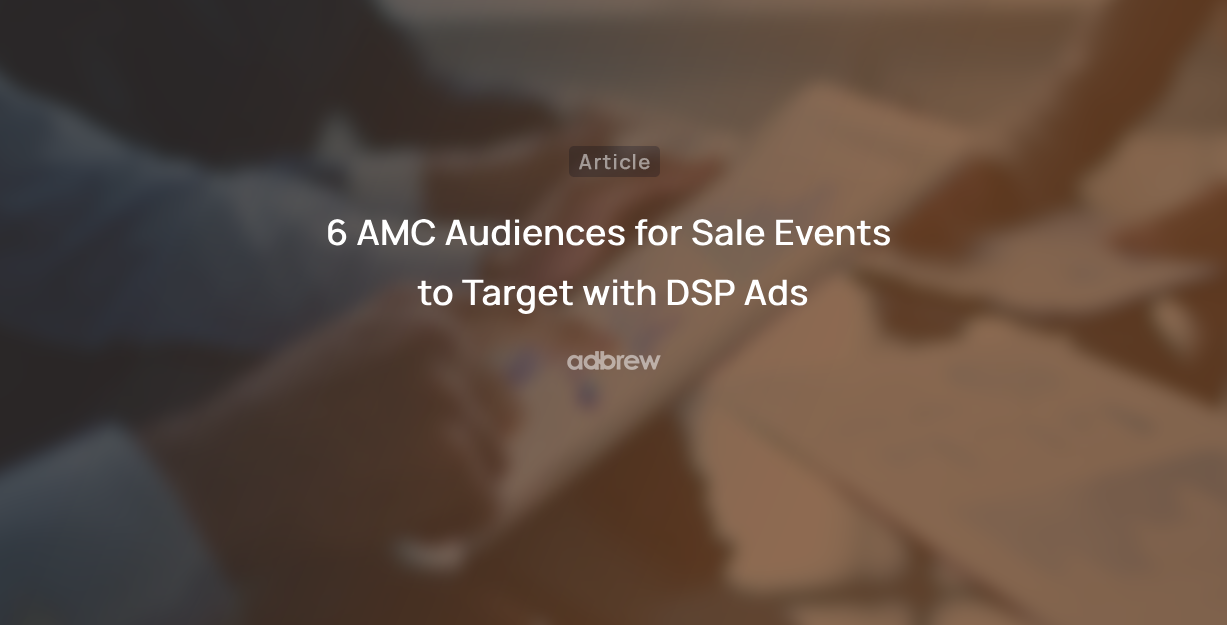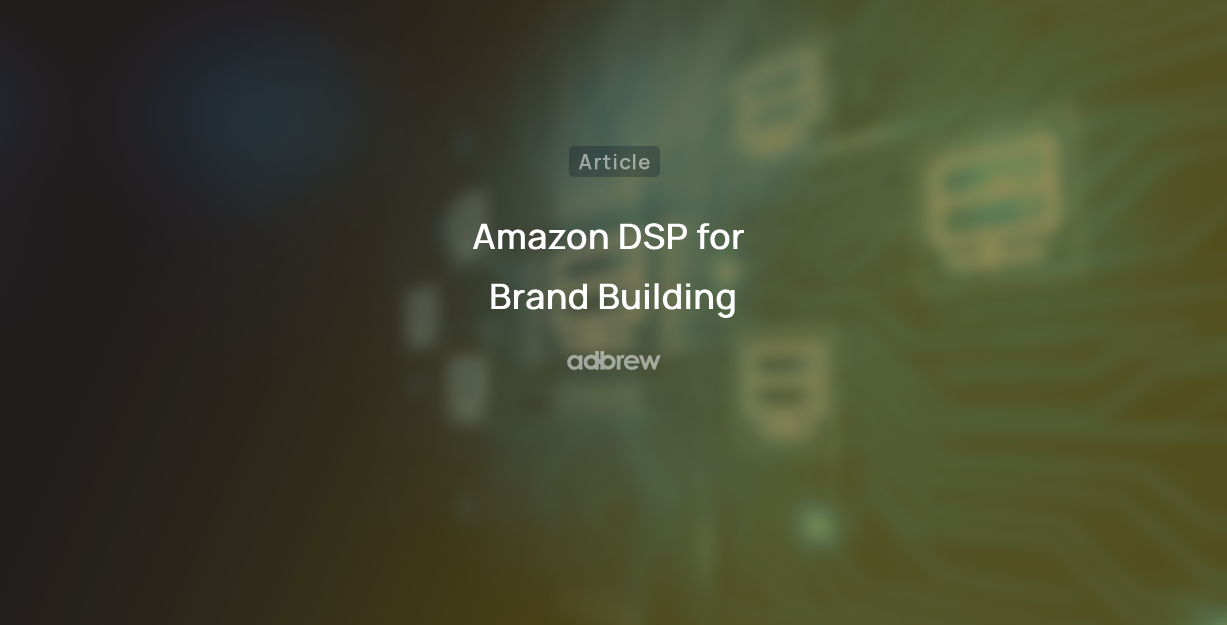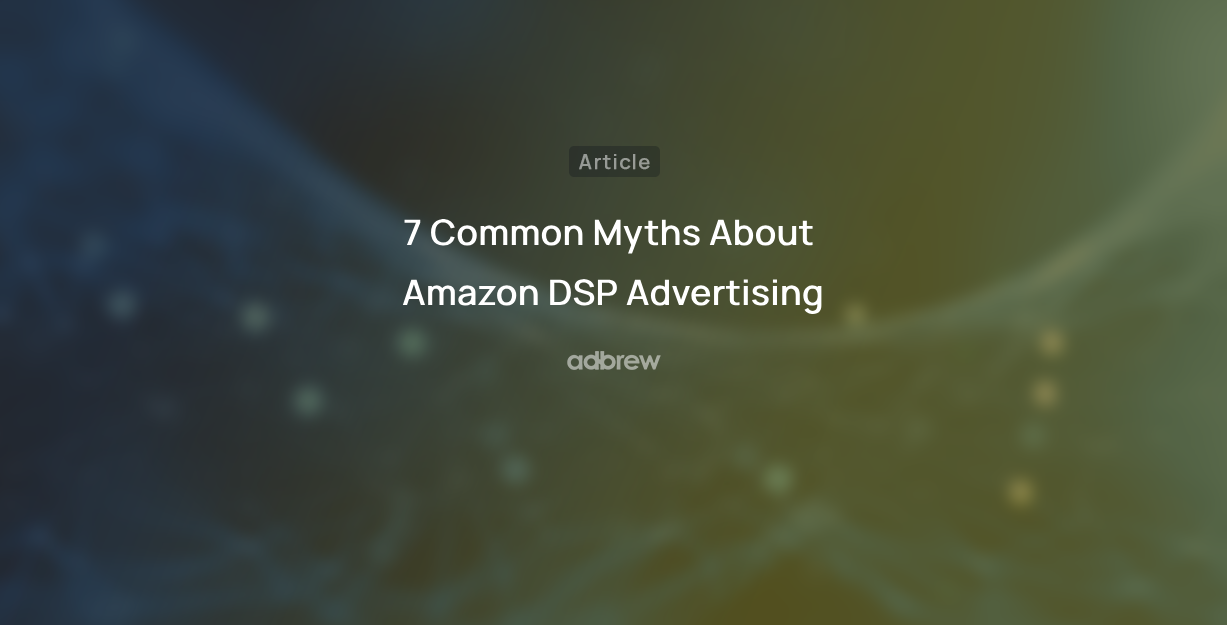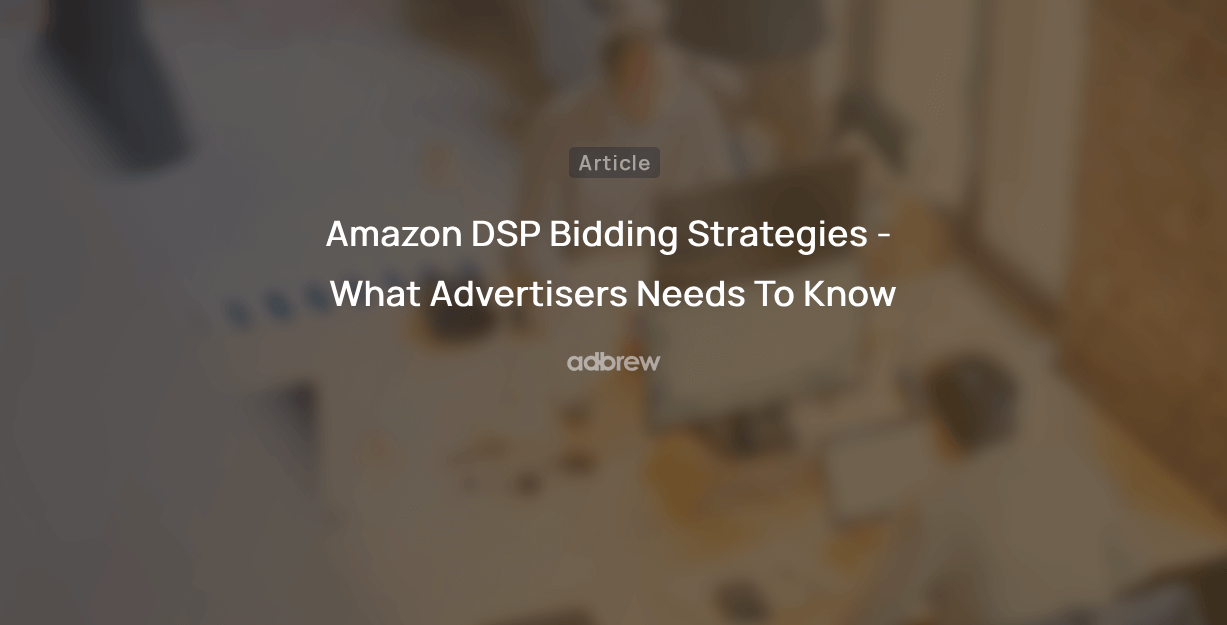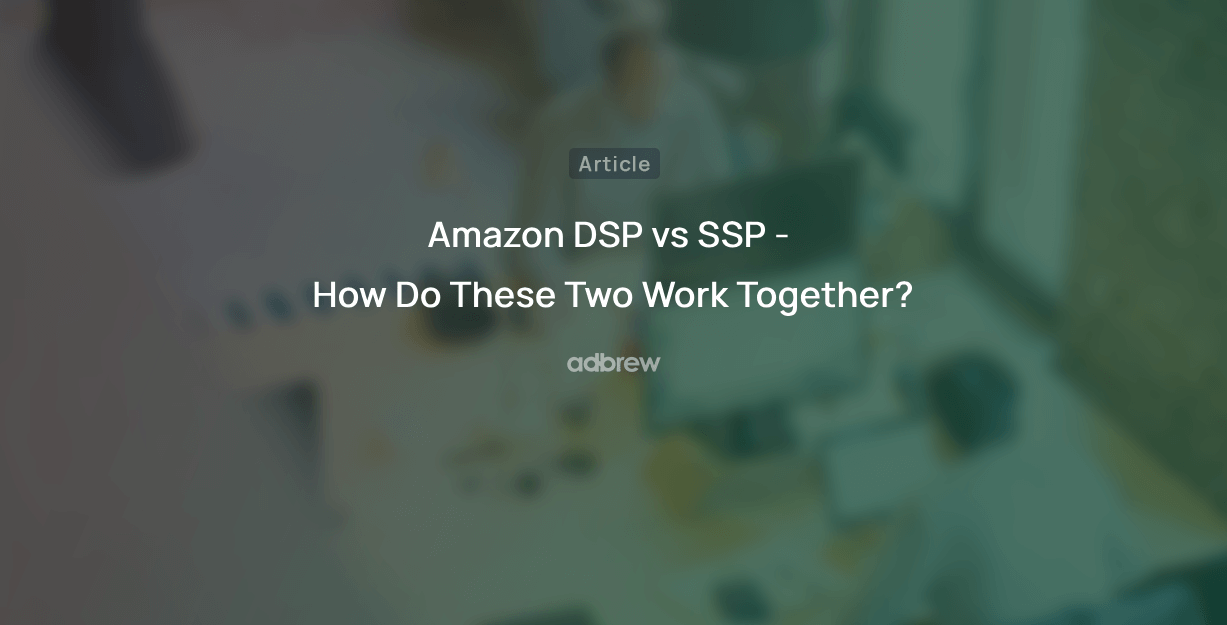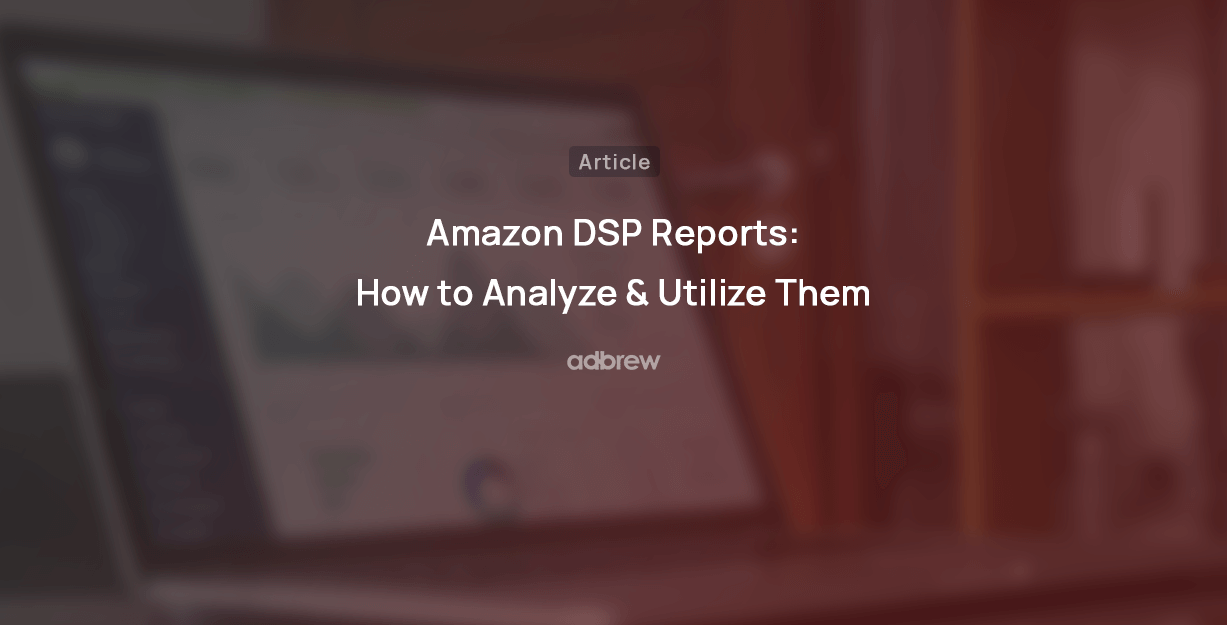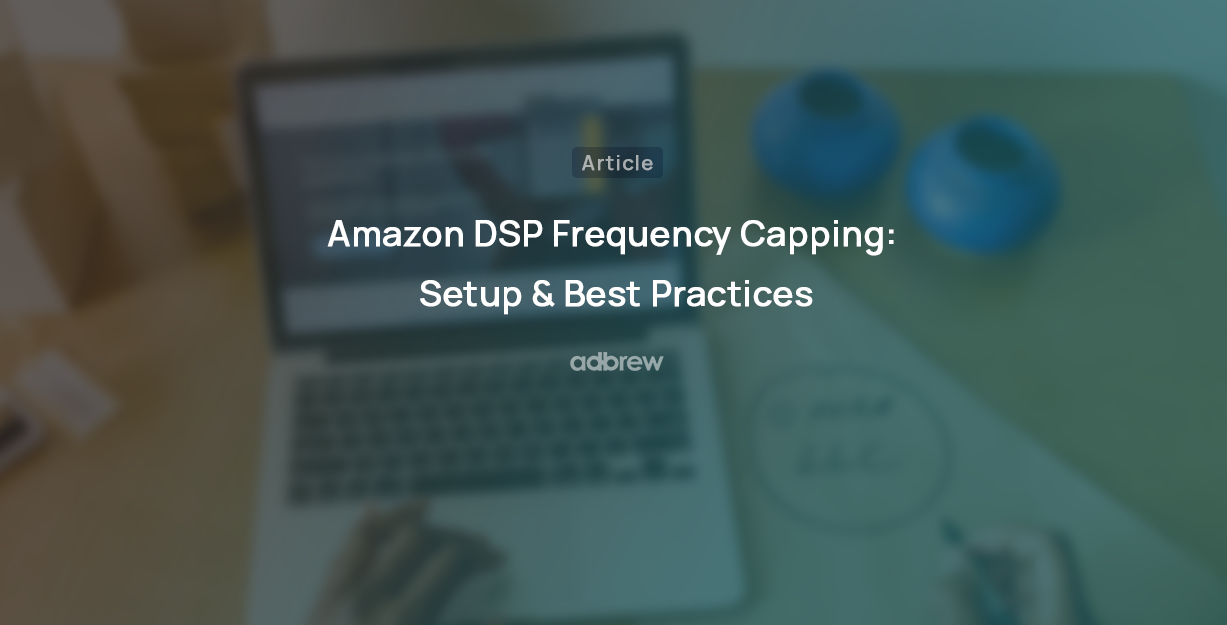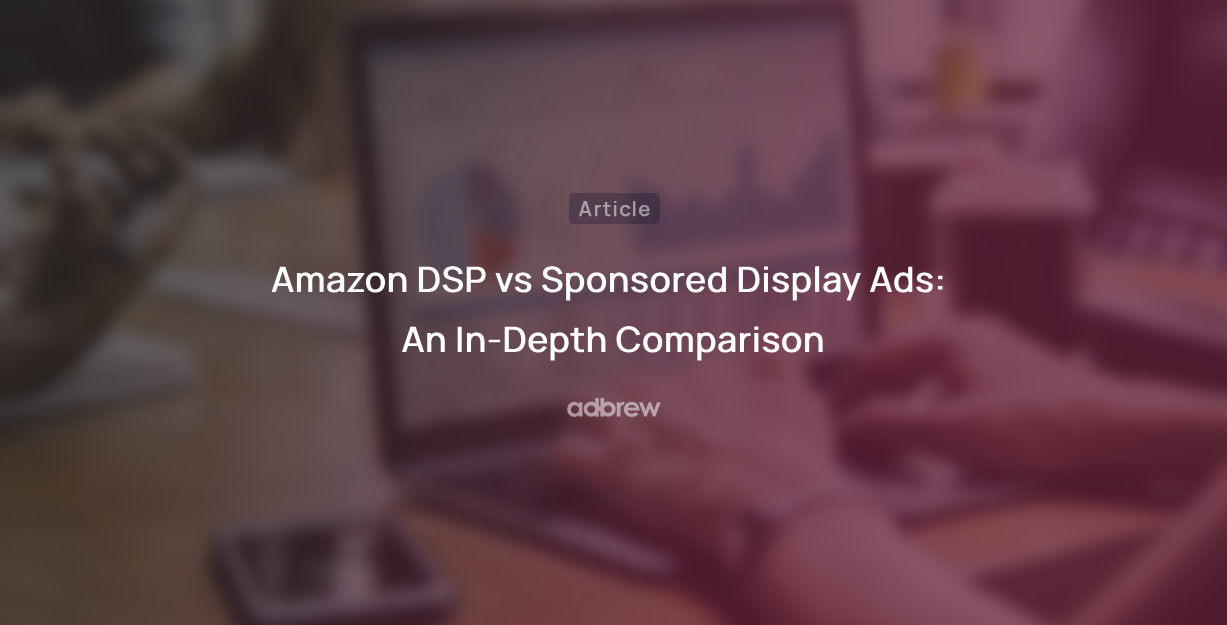
Amazon offers two different display advertising options for sellers: Sponsored Display ads and Amazon DSP ads. Selecting the right one for your business requires a clear understanding of their key distinctions and how they align with your specific goals.
In this blog, we’ll delve into the nuances of Amazon DSP vs Sponsored Display Ads on various criteria to help you make an informed decision tailored to your marketing strategy.
Eligibility: Who can use them?
Sponsored Display ads provide an accessible starting point for Amazon sellers, whether they are Brand Registered Sellers or Vendors. This straightforward platform removes the obstacle of a minimum budget requirement, making it suitable for businesses that are new to Amazon advertising or working with smaller advertising budgets. The user-friendly interface of Sponsored Display enables sellers to take direct control of their campaigns, encouraging experimentation and learning within the Amazon advertising ecosystem.
For established brands aiming to expand their reach and execute targeted audience engagement strategies, Amazon DSP offers a comprehensive solution. However, DSP comes with a somewhat higher entry threshold. Brands can opt for two service models:
- Managed Service: Tailored for high-investment campaigns, this service necessitates a minimum monthly spend of $50,000. Amazon’s team takes charge of campaign management, utilizing their expertise to achieve optimal results.
- Self-Service: Brands can choose this option to collaborate with external agencies for DSP campaigns. Although there isn’t a mandatory minimum spend, it is recommended to allocate a minimum of $6,000 to $10,000 per month to fully capitalize on DSP’s advanced targeting and customization capabilities.
Cost Structure
Sponsored Display ads operate on a cost-per-click (CPC) or cost-per-thousand-impressions (CPM) model. You either pay when someone clicks on your ad (CPC) or for every thousand times your ad is displayed (CPM).
Amazon DSP Ads utilize a CPM model exclusively. You pay based on the number of times your ad is displayed, offering less control over individual clicks.
Targeting Capabilities
Both Amazon DSP and Sponsored display advertising solutions offer contextual and audience targeting capabilities, but the level of granularity and flexibility differs significantly.
Sponsored Display ads provide basic targeting options based on:
- Contextual targeting: Reach shoppers browsing similar products or categories.
- Audience interests: Target users based on their browsing behavior and inferred interests.
- Views remarketing: Reconnect with users who have previously viewed your product listings.
- Purchase remarketing: Reconnect with users who have previously purchased your product.
Amazon DSP, on the other hand, empowers you with much more robust targeting options:
- Demographics: Target users based on age, gender, income, and location.
- Lifestyle: Reach individuals based on their interests, purchase behaviors, and life stage.
- Purchase intent: Target users actively researching or considering products similar to yours.
- Remarketing: Reconnect with past website visitors and app users.
- Lookalike audiences: Expand your reach to new users who share similar characteristics with your existing customers.
- Data segments: Leverage first-party data (your customer data) for highly targeted campaigns.
To know more about Amazon DSP Targeting
Creatives Control
When it comes to creative control, Amazon Sponsored Display Ads and Amazon DSP fall on opposite ends of the spectrum. Sponsored Display Ads prioritize ease of use with a limited set of creative options. You can choose between static images or video ads, but the overall layout and design are predetermined by Amazon. This means you can add your brand logo and headline, and potentially include some custom images within Amazon’s templates, but that’s about the extent of customization.
On the other hand, Amazon DSP offers a high degree of creative freedom. You can design and upload display ads in various formats, including banners, videos, and audio. This allows for complete control over the visual elements, messaging, and branding of your ad.
To know more about Amazon DSP Ad types.
Reporting Options
Sponsored Display Ads provide basic campaign metrics like impressions, clicks, cost-per-click (CPC), cost-per-thousand-impressions (CPM), and conversion rate. You can also track attributed sales and advertising cost of sales (ACoS). Regarding customization, SD offers limited options; you can filter reports by campaign, ad group, product, and other basic criteria.
Amazon DSP, on the other hand, offers a wider range of metrics, including:
- Delivery metrics: Impressions, clicks, view-through conversions (VTCs), and cost data.
- Engagement metrics: Click-through rate (CTR), video completion rate (VCR) for video ads, and average view time.
- Targeting metrics: Reach, frequency, and audience insights like demographics, interests, and purchase behaviors.
For Customization, DSP provides extensive customization capabilities. You can build custom reports with various dimensions and metrics, allowing for deeper analysis and insights to create a robust advertising strategy. You can also segment data by audience demographics, purchasing behavior, and other relevant factors.
To know more about Amazon DSP Reports
Complexity of Setting Up
Setting up Sponsored Display Ad campaigns is a breeze within the familiar ad console for managing other sponsored ads on Amazon. It’s a quick process that seamlessly integrates into your existing workflow, making it accessible for advertisers of all levels.
In contrast, unlike Sponsored Display ads, Amazon DSP introduces a notable shift. The setup requires access to a completely different dashboard, creating audiences, campaigns, and more. This adds a layer of complexity, demanding a distinct approach compared to the straightforward setup of Sponsored Display Ads. You should be prepared for a learning curve and invest time in navigating the nuances of the DSP setup process.
Ad placement: Where do the ads appear?
Sponsored Display Ads provide basic campaign metrics like impressions, clicks, cost-per-click (CPC), cost-per-thousand-impressions (CPM), and conversion rate. You can also track attributed sales and advertising cost of sales (ACoS). Regarding customization, SD offers limited options; you can filter reports by campaign, ad group, product, and other basic criteria.
Amazon DSP, on the other hand, offers a wider range of metrics, including:
- Delivery metrics: Impressions, clicks, view-through conversions (VTCs), and cost data.
- Engagement metrics: Click-through rate (CTR), video completion rate (VCR) for video ads, and average view time.
- Targeting metrics: Reach, frequency, and audience insights like demographics, interests, and purchase behaviors.
For Customization, DSP provides extensive customization capabilities. You can build custom reports with various dimensions and metrics, allowing for deeper analysis and insights to create a robust advertising strategy. You can also segment data by audience demographics, purchasing behavior, and other relevant factors.
Optimization Techniques
Sponsored Display offers a limited set of controls for managing your campaigns. You can adjust your budget and set bids, and recently, Amazon introduced a new feature that allows you to set a maximum cost-per-click (CPC) or cost-per-acquisition (CPA) for your ads. However, compared to Amazon DSP, Sponsored Display has fewer options for fine-tuning your campaigns.
Amazon DSP offers a wider range of tools to optimize your ad performance. You can control the minimum and maximum amount you’re willing to pay for ad placements (bids) and set limits on how often your ads appear to the same person (frequency). This gives you more precise control over how your ads are delivered and helps you reach your target audience more effectively.
To know more about Amazon DSP Bidding Strategy
Ready to get started with Adbrew?
Use Adbrew's AMC dashboard to view new-to-brand metrics for all your sponsored and DSP campaigns with ease.
Which is best for your Brand?
The choice between Amazon DSP and Sponsored Display Ads depends on your brand’s specific goals, advertising budget, and advertising priorities. If you’re looking to build brand awareness and reach a targeted audience with customized messaging, Amazon DSP offers the sophistication and flexibility you need. However, if you’re focused on driving conversions and maximizing ROI with a more straightforward approach, Sponsored Display Ads could be the better option. Ultimately, evaluating your brand’s objectives and assessing the strengths of each platform and ad types will help you make an informed decision that aligns with your marketing strategy.
In short:
Use Sponsored Display ads if:
- You are an Amazon seller with a limited budget.
- You want to test different targeting options and find what resonates with your audience.
- Your primary objective is to drive traffic to your Amazon product listings and increase sales.
- Consider Amazon DSP if:
- You are a larger brand with a significant advertising budget.
- You want to reach a wider audience beyond just Amazon shoppers.
- You prioritize brand awareness and want more granular control over your targeting and creative messaging.
Related Blogs
With the advent of Amazon Marketing Cloud (AMC), optimizing ad campaigns has become more versatile than ever. One notable feature […]
Amazon DSP, a Demand-Side Platform, allows advertisers to target audiences accurately using Amazon’s extensive shopper data. But before starting a […]
Amazon’s Demand-Side Platform (DSP) has become a game-changer for advertisers seeking to reach a massive audience of engaged shoppers. However, […]
Having spent considerable time working with Amazon DSP ads, we’ve observed a common challenge: achieving and measuring optimal results from […]
Are you a non-Amazon seller looking to tap into the power of Amazon’s advertising network? Amazon DSP, their Demand-Side Platform, […]
Sale events are all about reaching the right customers at the right time. But with so many promotions bombarding shoppers, […]
Amazon offers two different display advertising options for sellers: Sponsored Display ads and Amazon DSP ads. Selecting the right one […]
In today’s digital world, building a strong online brand is crucial for businesses of all sizes. While Amazon advertising solutions […]
Amazon Demand Side Platform unlocks programmatic advertising across many channels in the vast Amazon ecosystem and beyond, but often gets […]
Feeling trapped in the challenges of Amazon Sponsored Ads? Limited to engaging only with customers actively searching for your brand […]
If you are selling on Amazon, having a well-crafted remarketing strategy in place becomes crucial. Imagine re-engaging with potential customers […]
In digital advertising, Amazon DSP has emerged as a powerful tool for businesses to connect with their target audience and […]
Unlike Sponsored Ads, Amazon DSP offers the flexibility to run campaigns that guide users to either Amazon or non-Amazon destinations. […]
Whether you’re an advertiser seeking to connect with engaged shoppers worldwide or a publisher looking to monetize your ad inventory […]
Are you just starting with Amazon DSP (demand side platform) and feeling a bit lost in how to create Amazon DSP campaigns? We […]
Are you an e-commerce business owner looking for new and interesting methods to reach out to potential customers? Look no […]
We all utilize many different DSP ad types and targeting options available to advertisers in Amazon DSP. But how do […]
Amazon DSP (demand side platform) provides a multitude of targeting options, ranging from customer demographics, and behavioral targeting to contextual […]
Every advertiser wants their ads to reach a broad audience. However, showing an ad too many times to one person […]
With more and more shoppers turning to Amazon for online shopping, it is obvious why brands don’t want to limit […]






